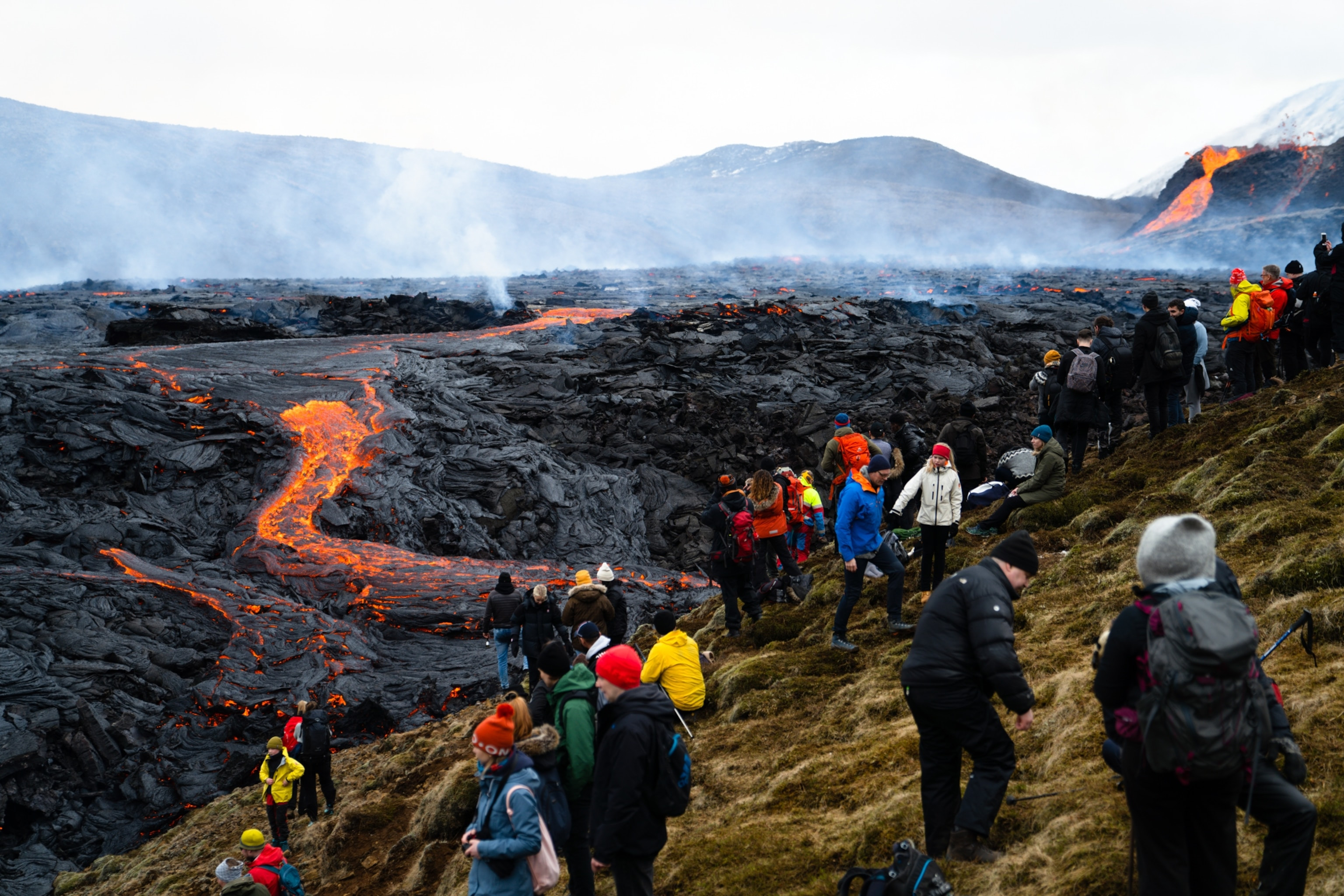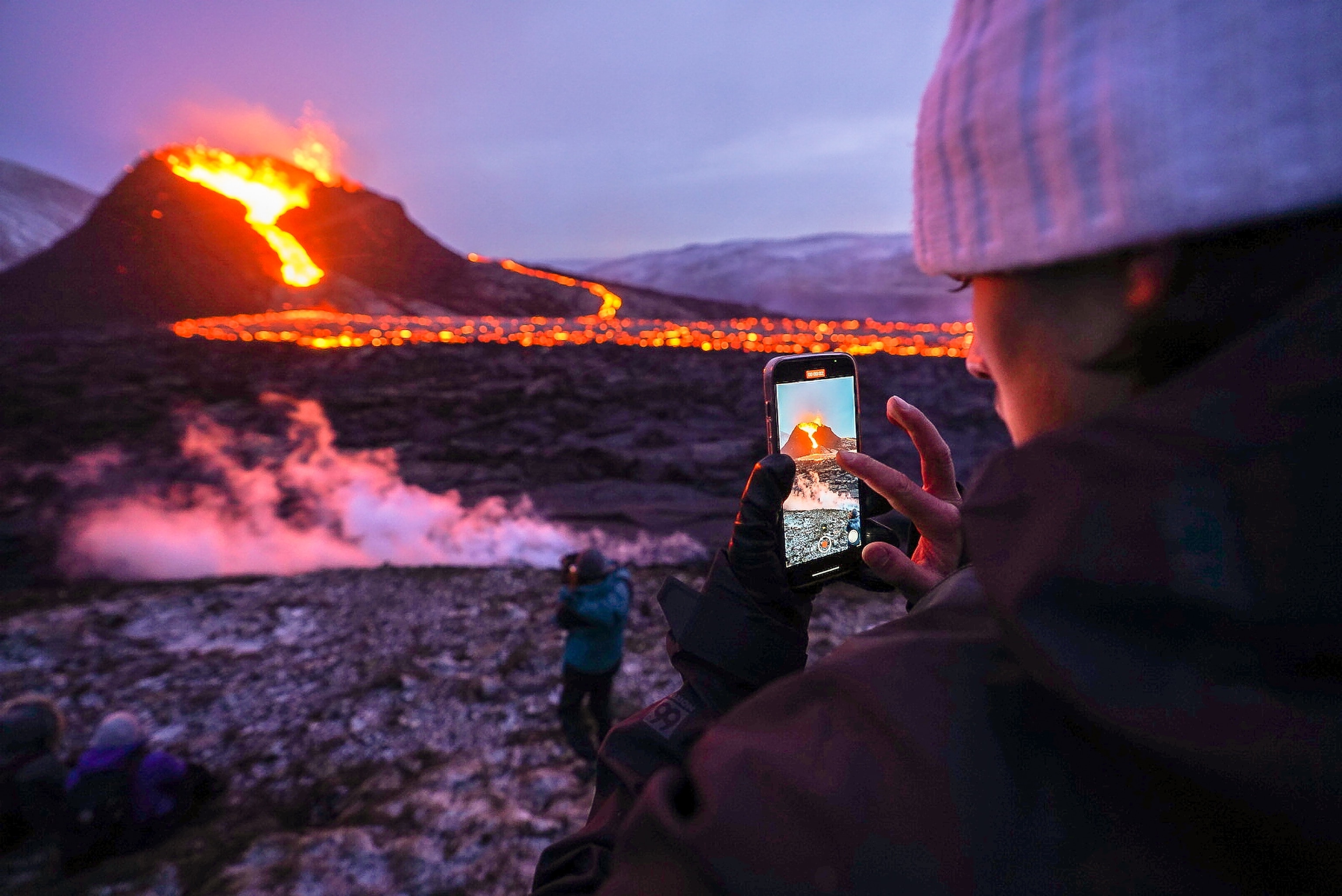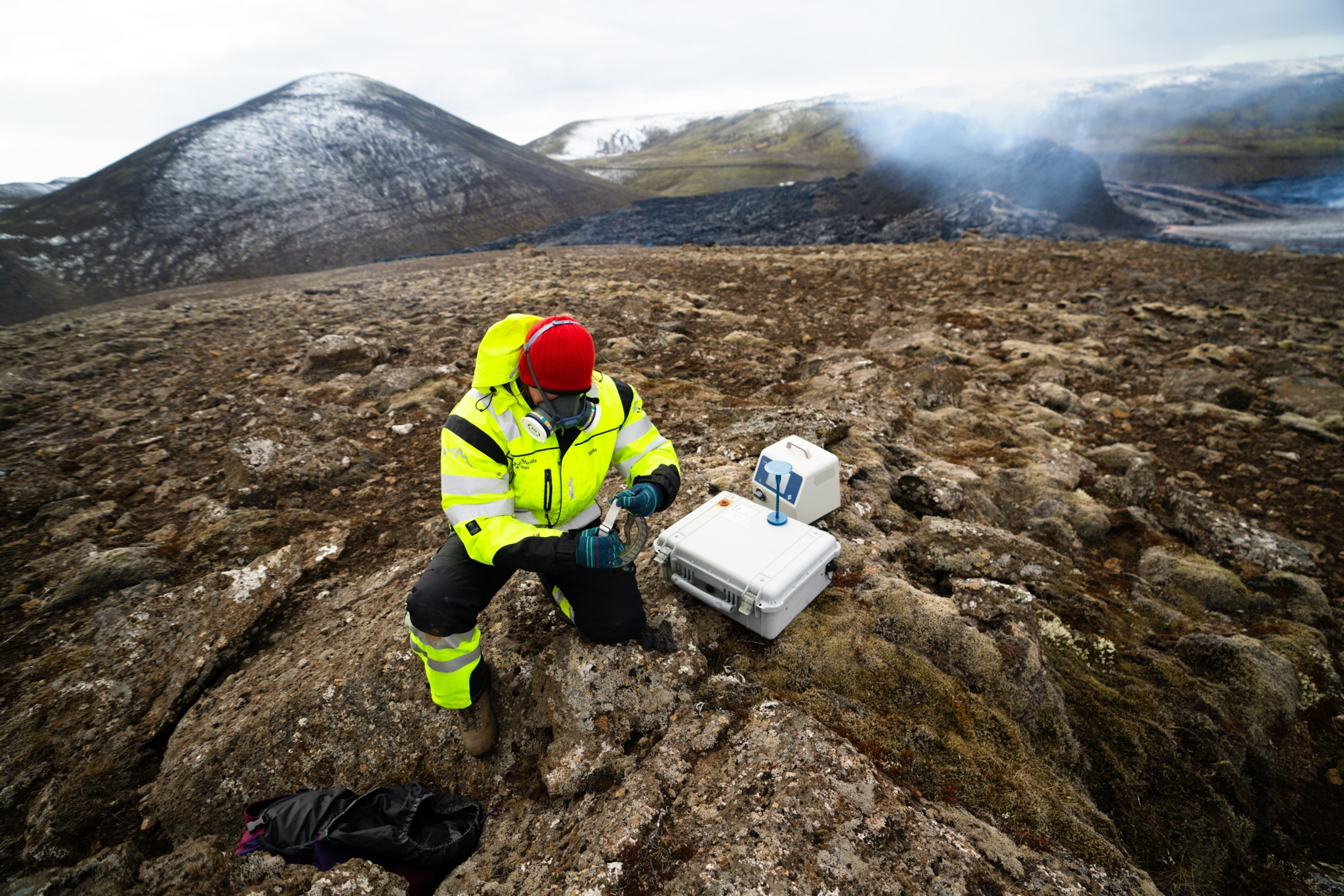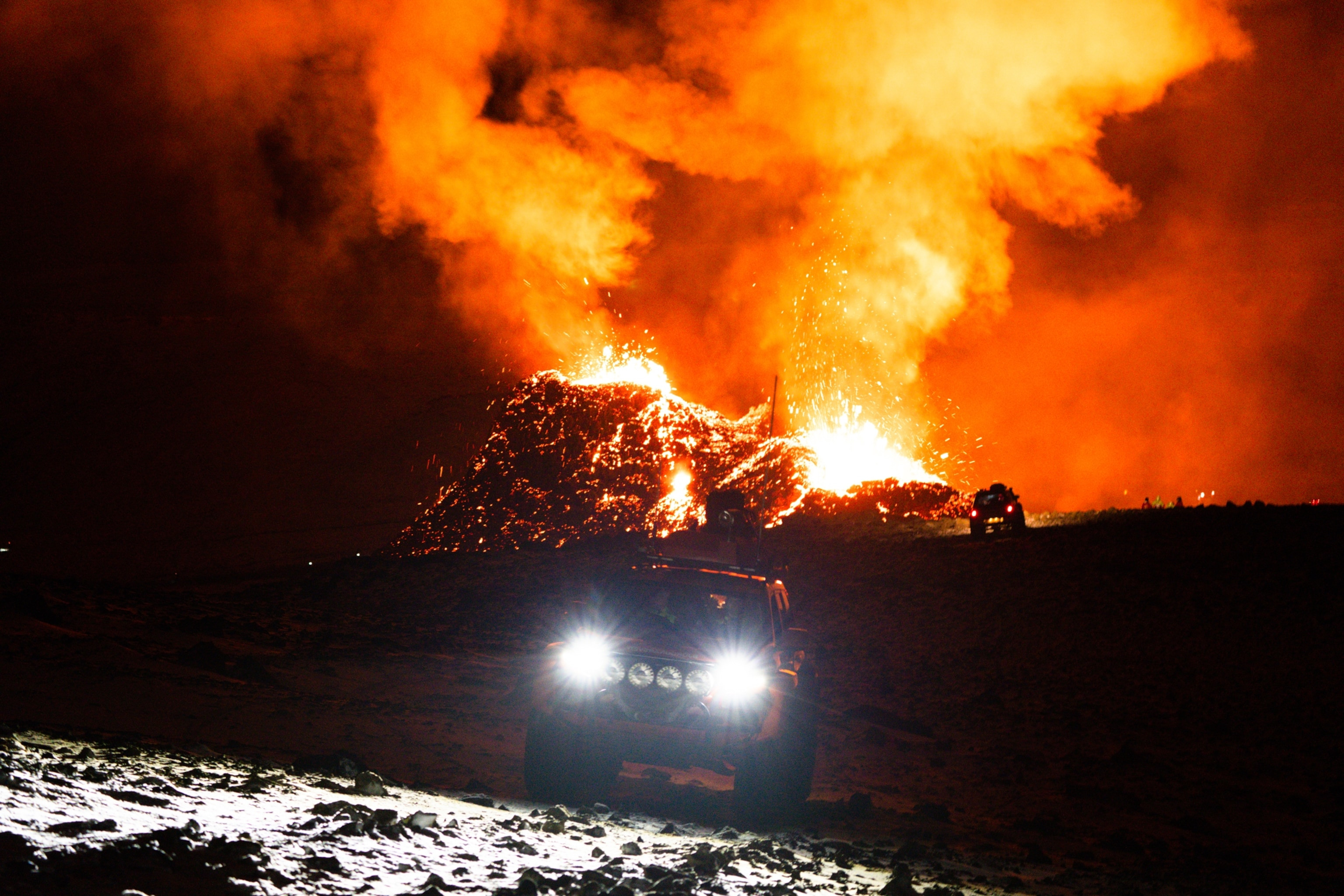Volcanoes and tourism might seem like an unlikely pairing, but volcanic landscapes and activity are actually a significant draw for travelers. SIXT.VN understands the allure of these powerful natural wonders and how they can enhance your travel experiences in destinations like Vietnam. We’ll explore the fascinating ways volcanoes contribute to tourism, from geothermal hot springs to unique geological formations. Let SIXT.VN be your guide to discovering the wonders of volcano tourism with convenient services like airport transfers, hotel bookings, and tours.
1. What is Volcanotourism and Why Is It Popular?
Volcanotourism is a niche market for tourism. It centers on visiting volcanoes or volcanic landscapes to experience and learn about geological formations. The popularity of volcanotourism arises from the combination of adventure, geological interest, and unique aesthetic value.
1.1. The Allure of Volcanoes
Volcanoes, with their raw power and dramatic landscapes, hold a unique fascination for many. The appeal of volcano tourism lies in several factors:
- Natural Spectacle: The sight of an erupting volcano or the aftermath of volcanic activity is an awe-inspiring display of nature’s power.
- Geothermal Features: Volcanic regions often boast hot springs, geysers, and other geothermal features that offer therapeutic and recreational opportunities.
- Unique Landscapes: Volcanic eruptions create unusual geological formations, such as lava fields, craters, and volcanic peaks, which provide stunning scenery for hiking and exploration.
- Scientific Interest: For geology enthusiasts and students, volcanoes offer a chance to study geological processes firsthand.
According to research from the Journal of Volcanology and Geothermal Research in 2020, volcano tourism provides significant economic benefits to local communities while fostering an understanding of volcanic hazards and geological processes.
1.2. Global Popularity of Volcano Tourism
Volcano tourism is a growing trend worldwide. Several destinations are famous for their volcanic attractions:
- Hawaii Volcanoes National Park (USA): Home to active volcanoes like Kilauea and Mauna Loa, attracting millions of visitors annually.
- Iceland: Known for its volcanic landscapes, geysers, and hot springs.
- Mount Vesuvius and Pompeii (Italy): A historical site where visitors can explore the ruins of a city destroyed by a volcanic eruption.
- Mount Fuji (Japan): An iconic volcano that is a major tourist attraction, offering hiking and stunning views.
- Yellowstone National Park (USA): Famous for its geothermal features, including geysers and hot springs, resulting from volcanic activity.
- Mount Bromo (Indonesia): Known for its breathtaking sunrises and volcanic landscapes.
 Tourists hiking on volcanic terrain with a majestic volcano in the background
Tourists hiking on volcanic terrain with a majestic volcano in the background
2. What are The Ways Volcanoes Contribute to Tourism?
Volcanoes contribute to tourism in various ways. They include the creation of unique landscapes, geothermal features, fertile soils, and geological sites that provide both adventure and educational opportunities. These factors attract tourists.
2.1. Geothermal Hot Springs and Wellness Tourism
One of the most significant ways volcanoes benefit tourism is through geothermal activity.
- Hot Springs: Volcanic areas are rich in geothermal hot springs, which are heated by underground volcanic activity. These hot springs are popular for relaxation, therapeutic treatments, and wellness tourism. Destinations like Iceland and Japan are famous for their hot springs resorts.
- Mud Baths: Volcanic mud is rich in minerals and is used in mud baths, which are believed to have health benefits for the skin and muscles.
- Geothermal Energy: Some volcanic regions use geothermal energy to heat resorts and other tourist facilities, promoting eco-friendly tourism.
2.2. Unique Landscapes and Adventure Tourism
Volcanic eruptions create unique landscapes that attract adventure tourists and nature enthusiasts.
- Lava Fields: Vast stretches of solidified lava provide unique hiking and exploration opportunities. Iceland’s lava fields, for example, are a popular destination for hikers.
- Craters and Calderas: Volcanic craters and calderas offer stunning views and hiking trails. Crater Lake National Park in the US is a prime example.
- Volcanic Peaks: Climbing or hiking volcanic peaks can be an adventurous experience, offering panoramic views of the surrounding landscape. Mount Kilimanjaro in Tanzania is a popular destination for mountain climbers.
- Volcanic Islands: Volcanic activity can create new islands, which become unique destinations for exploration. Surtsey, an island formed by a volcanic eruption off the coast of Iceland in the 1960s, is a protected area used for scientific research.
2.3. Fertile Soils and Agricultural Tourism
Volcanic soils are rich in minerals and nutrients, making them highly fertile. This can lead to thriving agricultural industries, which in turn attract tourists interested in culinary experiences and agritourism.
- Wine Regions: Volcanic soils are ideal for growing grapes, leading to the development of wine regions near volcanoes. Mount Etna in Sicily, Italy, is known for its vineyards and wineries.
- Coffee Plantations: Volcanic regions often support coffee plantations, attracting tourists interested in learning about coffee cultivation and tasting local coffee. Hawaii’s Kona coffee region is a famous example.
- Fruit and Vegetable Farms: The fertile soils in volcanic areas are also suitable for growing a variety of fruits and vegetables. Agritourism initiatives allow visitors to explore farms, taste fresh produce, and learn about local farming practices.
According to the Food and Agriculture Organization (FAO) of the United Nations, volcanic soils are highly productive due to their high nutrient content and water-retention capacity, which supports diverse agricultural activities.
2.4. Geological and Educational Tourism
Volcanoes offer valuable insights into geological processes. They attract tourists interested in learning about the Earth’s history and the forces that shape our planet.
- Volcano Observatories: Visiting volcano observatories can provide educational experiences. Tourists can learn about how scientists monitor volcanic activity and predict eruptions. The Hawaiian Volcano Observatory is a key scientific institution.
- Geological Museums: Museums located near volcanoes display geological specimens, interactive exhibits, and educational programs about volcanic activity. The Volcanic Museum in Kagoshima, Japan, provides information about the Sakurajima volcano.
- Guided Tours: Guided tours led by volcanologists or geologists offer in-depth explanations of volcanic features, geological history, and the science behind eruptions.
 A tourist capturing the scenic view of a volcanic eruption on their smartphone
A tourist capturing the scenic view of a volcanic eruption on their smartphone
3. What are The Risks Associated with Volcano Tourism?
While volcanoes attract tourists, they also pose risks. It is important to be aware of dangers and take precautions to reduce the chance of injuries.
3.1. Eruptions and Volcanic Hazards
The most obvious risk associated with volcano tourism is the possibility of eruptions. Volcanic eruptions can be dangerous and result in:
- Lava Flows: Lava flows can destroy property and pose a burn risk.
- Ashfall: Ashfall can disrupt air travel, contaminate water supplies, and cause respiratory problems.
- Pyroclastic Flows: Pyroclastic flows are fast-moving currents of hot gas and volcanic matter that can be deadly.
- Lahars: Lahars are mudflows composed of volcanic ash and water that can inundate valleys and destroy infrastructure.
- Volcanic Gases: Volcanic gases such as sulfur dioxide can be toxic and cause respiratory issues.
The Smithsonian Institution’s Global Volcanism Program offers an online active eruption tracker. It provides up-to-date information on volcanic activity around the world.
3.2. Safety Measures and Guidelines
To minimize the risks associated with volcano tourism, it is important to follow safety guidelines and take precautions:
- Monitor Volcanic Activity: Stay informed about the current volcanic activity level and heed warnings from local authorities.
- Follow Evacuation Orders: If an eruption is imminent, follow evacuation orders promptly.
- Wear Protective Gear: Wear appropriate protective gear, such as sturdy shoes, long clothing, and a mask to protect against ash and gases.
- Stay on Marked Trails: Stay on marked trails and avoid venturing into hazardous areas.
- Consult Local Experts: Consult local experts or guides who are familiar with the volcanic area and its hazards.
3.3. Ethical Considerations
Volcano tourism should be conducted responsibly and ethically to minimize negative impacts on the environment and local communities.
- Respect Local Culture: Respect the culture and traditions of local communities living near volcanoes.
- Minimize Environmental Impact: Minimize your environmental impact by avoiding littering, staying on marked trails, and supporting eco-friendly tourism initiatives.
- Support Local Economy: Support the local economy by purchasing goods and services from local businesses.
- Avoid Disaster Tourism: Avoid engaging in disaster tourism that exploits the suffering of communities affected by volcanic eruptions.
 Members of the Search and Rescue Team monitoring gas levels near a volcanic eruption
Members of the Search and Rescue Team monitoring gas levels near a volcanic eruption
4. What are Examples of Successful Volcano Tourism Destinations?
Some destinations have managed to leverage the unique features of volcanoes to create successful tourism industries. These regions offer lessons in balancing risk and reward while respecting the environment.
4.1. Hawaii Volcanoes National Park, USA
Hawaii Volcanoes National Park is one of the most popular volcano tourism destinations in the world. It attracts millions of visitors.
- Volcanic Features: The park features two active volcanoes, Kilauea and Mauna Loa. Visitors can witness volcanic activity, explore lava tubes, and hike through volcanic landscapes.
- Cultural Significance: The park has cultural significance for Native Hawaiians, who consider volcanoes sacred. Cultural demonstrations and educational programs teach about the history and significance of these natural landmarks.
- Safety Measures: Park rangers monitor volcanic activity and provide visitors with safety guidelines. Areas may be closed due to volcanic hazards.
- Tourism Activities: Activities include hiking, camping, sightseeing, and ranger-led programs. The park also offers night viewings of volcanic eruptions.
4.2. Iceland
Iceland is renowned for its volcanic landscapes and geothermal features. The country relies on tourism to support the economy.
- Volcanic Features: Iceland has numerous active volcanoes, geysers, and hot springs. The volcanic landscape creates a unique backdrop for tourism.
- Geothermal Energy: Iceland uses geothermal energy for heating and electricity. This promotes sustainable tourism practices.
- Tourism Activities: Popular activities include visiting hot springs (like the Blue Lagoon), hiking on glaciers, and viewing the Northern Lights.
- Safety Measures: The Icelandic Meteorological Office monitors volcanic activity and provides warnings to the public. Visitors should be prepared for sudden changes in weather conditions.
4.3. Mount Vesuvius and Pompeii, Italy
Mount Vesuvius and Pompeii attract tourists to the historical and geological aspects of volcanic activity.
- Historical Significance: Pompeii was destroyed by the eruption of Mount Vesuvius in 79 AD. It offers a glimpse into ancient Roman life.
- Geological Significance: Mount Vesuvius is an active volcano. It offers insights into volcanic processes.
- Tourism Activities: Visitors can explore the ruins of Pompeii, hike to the crater of Mount Vesuvius, and visit museums that display artifacts from Pompeii.
- Safety Measures: Authorities monitor volcanic activity and regulate access to the crater of Mount Vesuvius.
4.4. Mount Fuji, Japan
Mount Fuji is an iconic symbol of Japan and a major tourist attraction. It offers both natural beauty and cultural importance.
- Cultural Significance: Mount Fuji is considered sacred in Japanese culture. It is a popular subject for art and photography.
- Tourism Activities: Hiking Mount Fuji is a popular activity during the summer months. The mountain also offers scenic views from the surrounding areas.
- Economic Impact: Mount Fuji contributes to the local economy through tourism-related businesses, such as hotels, restaurants, and souvenir shops.
 Tourists enjoying the sunset near a volcanic region
Tourists enjoying the sunset near a volcanic region
5. How Can SIXT.VN Enhance Your Volcano Tourism Experience?
SIXT.VN is your reliable partner for exploring the wonders of Vietnam, including regions with unique geological formations and potential volcanic activity.
5.1. Tailored Travel Planning
SIXT.VN offers personalized travel planning services to create an itinerary that suits your interests and preferences.
- Customized Itineraries: Our travel experts can design a tailored itinerary that includes visits to geological sites. You can learn about Vietnam’s volcanic history.
- Local Insights: Benefit from our local knowledge to discover hidden gems, cultural experiences, and unique attractions.
- 24/7 Support: Enjoy peace of mind with our round-the-clock customer support, ensuring assistance whenever you need it.
5.2. Airport Transfers
Start your trip stress-free with SIXT.VN’s convenient airport transfer services.
- Meet and Greet: Our professional drivers will greet you at the airport and assist with your luggage.
- Reliable Transportation: Travel comfortably and safely to your hotel or other destinations in our modern, well-maintained vehicles.
- Fixed Rates: Benefit from transparent, fixed rates with no hidden fees.
5.3. Hotel Bookings
SIXT.VN offers a wide range of accommodation options to suit every budget and preference.
- Extensive Selection: Choose from a variety of hotels, resorts, and guesthouses in popular tourist destinations.
- Competitive Rates: Enjoy competitive rates and exclusive deals on hotel bookings.
- Verified Reviews: Make informed decisions with verified reviews from other travelers.
5.4. Tour and Activity Bookings
Discover the best of Vietnam with SIXT.VN’s curated selection of tours and activities.
- Guided Tours: Join guided tours to explore historical sites, natural landmarks, and cultural attractions.
- Unique Experiences: From cooking classes to adventure sports, we offer a variety of unique experiences to enrich your trip.
- Easy Booking: Easily book tours and activities online or through our customer support team.
5.5. Comprehensive Travel Support
SIXT.VN goes beyond basic travel services. We provide comprehensive support to ensure a smooth and memorable travel experience.
- Visa Assistance: Our experts can assist with visa applications and provide up-to-date information on entry requirements.
- Travel Insurance: Protect your trip with our comprehensive travel insurance options, covering medical emergencies, trip cancellations, and more.
- Local Assistance: Get assistance with local transportation, restaurant recommendations, and other travel needs from our local team.
Planning a trip to Vietnam can be challenging, with language barriers, transportation logistics, and the need for reliable services. SIXT.VN simplifies the process. We offer comprehensive travel solutions tailored to your needs.
Ready to explore Vietnam with ease? Visit SIXT.VN today. Discover our range of services, including airport transfers, hotel bookings, and personalized tour planning. Let us help you create an unforgettable travel experience.
Address: 260 Cau Giay, Hanoi, Vietnam.
Hotline/Whatsapp: +84 986 244 358.
Website: SIXT.VN.
6. FAQs about Volcano Tourism
6.1. Is volcano tourism safe?
Volcano tourism can be safe if you follow safety guidelines and heed warnings from local authorities. Stay informed about volcanic activity, wear protective gear, and stay on marked trails.
6.2. What should I wear when visiting a volcano?
Wear sturdy shoes, long clothing, and a mask to protect against ash and gases. Bring sunscreen, a hat, and sunglasses.
6.3. What are the best volcano tourism destinations?
Some of the best volcano tourism destinations include Hawaii Volcanoes National Park (USA), Iceland, Mount Vesuvius and Pompeii (Italy), and Mount Fuji (Japan).
6.4. What are the risks of volcano tourism?
The risks of volcano tourism include eruptions, lava flows, ashfall, pyroclastic flows, lahars, and volcanic gases.
6.5. How can I minimize the environmental impact of volcano tourism?
Minimize your environmental impact by avoiding littering, staying on marked trails, and supporting eco-friendly tourism initiatives.
6.6. What is the cultural significance of volcanoes?
Volcanoes are considered sacred in many cultures and play a significant role in mythology and local traditions.
6.7. What is the economic impact of volcano tourism?
Volcano tourism can have a significant economic impact by supporting local businesses, creating jobs, and generating revenue.
6.8. How does volcanic soil benefit agriculture?
Volcanic soil is rich in minerals and nutrients, making it highly fertile and suitable for growing a variety of crops.
6.9. What is geothermal energy, and how is it used in tourism?
Geothermal energy is heat from the Earth’s interior, which can be used to generate electricity, heat resorts, and provide hot springs for tourism.
6.10. What is the role of volcano observatories in tourism?
Volcano observatories monitor volcanic activity, provide safety guidelines, and offer educational programs to tourists.



